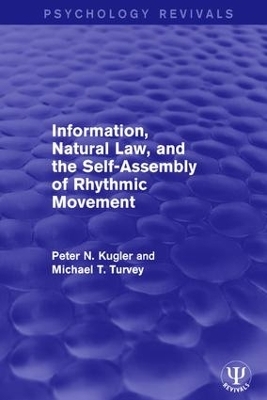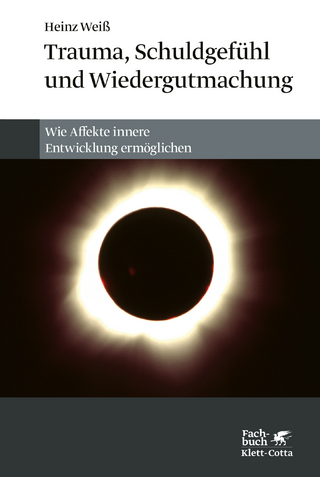
Information, Natural Law, and the Self-Assembly of Rhythmic Movement
Routledge (Verlag)
978-1-138-12399-1 (ISBN)
Originally published in 1987, the introduction states: "the authors have successfully accomplished their program – to explain, based on physical representations, the observed relations among various parameters of wrist-pendulum oscillations. Thereby a set of new ideas and concepts, including those developed recently by the scientific school to which the authors belong, are introduced to biology. These concepts are closely related to the experimental data. This accomplishment makes the book especially attractive and demonstrates once more the productivity of applying physics to biology."
"Clear language, simple figures, and physical examples illuminate rather complicated problems. These attractive features should make the book intelligible to a variety of investigators in the field of motor control, not only to the specialists with physical and mathematical education."
From the foreword: " Kugler and Turvey have written strategic physical biology, and shown that, after all, dynamics (including both kinetics and kinematics) may support a unitary physical view of some of the profound operations of our brains… This is a grand start on what I hope is a larger program of demystifying behaviour."
Peter N. Kugler, Michael T. Turvey
Foreword: Physics and Biology F. Eugene Yates. Introduction: Physical and Neurophysiological Perspectives on Movement M.B. Berkinblit and A.G. Feldman. Preface. 1. Perspectives on Rhythmic Movement 2. Problems of Measurement and Modeling 3. Why Things Flow: An Outline of Physical Theory for Simple Atomisms 4. Why Things Flow: An Outline of Physical Theory for Complex Atomisms 5. Why Things "Tick": Physical Prerequisites for Self-Sustained Oscillation 6. An Experimental Methodology for Investigating the Soft, Self-Assembly of the Pendular, Clocking Mode 7. Haptic Information as the Abstracted Morphology of Movement Dynamics 8. The Scaling Relation of Natural Period to Mass and Length 9. Measuring the Energy for Coordination 10. Spacing in the Pendular Clocking Mode: The Theory of Conditional Periodicity and Adiabatic Invariants in Open Conservative and Nonconservative Systems 11. Assembling and Sustaining Escapements for Biomechanical Oscillation: Identifying the Engine (Chemical-Thermal-Mechanical) Process 12. The Adiabatic Hypothesis and the Proportioning of Space to Mass, Length, and Period: Experimental Evaluations 13. Intentionality and Units of Action. Epilogue. Appendix A: Holonomic and Non-Holonomic Constraints. Appendix B: Collisions and Fracture. Appendix C: Huygens’ Derivation of the Center of Oscillation. Appendix D: Physical Laws, Structural Stability, and Dimensional Homogeneity. Appendix E: Natural Law and Adjunctive Logic. Author Index. Subject Index.
| Erscheinungsdatum | 07.09.2017 |
|---|---|
| Reihe/Serie | Psychology Revivals |
| Verlagsort | London |
| Sprache | englisch |
| Maße | 156 x 234 mm |
| Gewicht | 453 g |
| Themenwelt | Geisteswissenschaften ► Psychologie ► Allgemeine Psychologie |
| Geisteswissenschaften ► Psychologie ► Biopsychologie / Neurowissenschaften | |
| Naturwissenschaften ► Biologie ► Zoologie | |
| ISBN-10 | 1-138-12399-4 / 1138123994 |
| ISBN-13 | 978-1-138-12399-1 / 9781138123991 |
| Zustand | Neuware |
| Haben Sie eine Frage zum Produkt? |
aus dem Bereich


